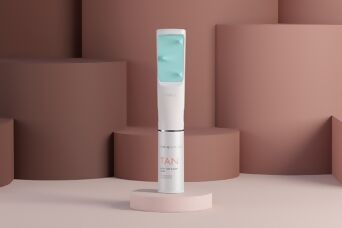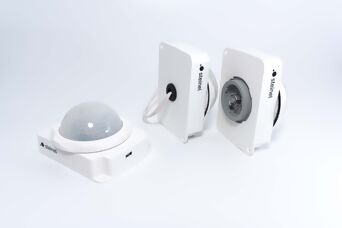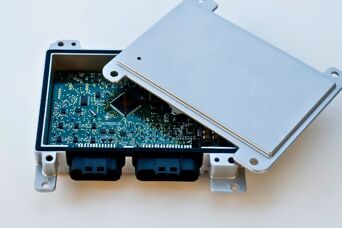-
Services
-
References
We are at home in the most diverse markets! An extract from our references.
-
Are you looking for an existing sensor solution?
Then you will certainly find what you are looking for in our SENSOTEC Portfolio.
-
-
References
-
Media Room
Our expertise in sound and vision: Find exciting content about us and our services.
-
You have the idea?
We have the competencies. The development portrait.
-
-
Company
-
In search of a new challenge?
All information about a career at STEINEL Solutions.
-
We train!
We accompany young people on their way into working life.
-
- Career
- Contact
Success factors in product development
Product requirements have changed over the years in many industries. As a result, the demands placed on development departments and the developers themselves have also changed. In addition to technology and expertise, the human factor continues to play an important role, while methods and customer relationships are further success factors. We have arrived in the dynamic, agile development age - and the journey continues. An expert opinion from Stefan Walker, Head of OEM Engineering at STEINEL Solutions.
Developments are becoming increasingly specialised and complex. What was realised 20 years ago with a simple microcontroller and a self-contained application is now moving towards complex algorithms with AI and product connectivity. With the further development of embedded systems, high-performance components are available that offer new possibilities across the board. These trends run through a wide range of areas: Microcontrollers, sensor technology, IoT, power and battery management - to name just a few. Most of our customers also have a very technical focus and are observing this trend. New possibilities and solutions are emerging, and with them new challenges for the development of complex networked products.
Aspects of successful product development
With the relocation and integration of mechanical and electromechanical functions into the field of electronics, the focus of tasks here is also shifting from the designer to the electronics developer. Proper integration into mechanical components is still very important, as space conditions and integration requirements are often very strictly defined by the customer.
Nowadays, a harmonised design between electronics and mechanics is elementary for the success of a product. Another success factor is producibility, in terms of the design, quality and manufacturing costs of the product. It is essential to incorporate these considerations into a project at an early stage and to take these holistic requirements into account right from the concept stage. This creates the basis for a successful product.
The setup of STEINEL Solutions with its one-stop-shop concept - from concept, development and industrialisation to series production and after-sales services, all from a single source - supports this approach perfectly, because the interfaces are reduced, the communication channels are short and the experts for all areas work in-house, ideally even in the same office.
This simplifies development work and offers our customers clear advantages over their competitors. The whole thing is rounded off by our in-house capabilities in the area of operating and test equipment construction, as well as the complete tool procurement chain.

Key factors: people, collaboration and customer relationships
However, it is not only the customers, their products and consequently the development projects that are becoming more complex; the demands on the developers themselves are also changing. An electronics developer who used to be a generalist and could be deployed very flexibly in many projects has developed into a specialist over the years. In addition to his generalist knowledge, he covers a very specific technical aspect as a specialist. This kind of employee development does not happen overnight - it needs to go hand in hand with market trends, customer needs and the company's vision for the future. In any case, this must always coincide with an employee's personal interests.
Only if there is time and interest can the change from generalist to specialist be successfully implemented. The more heterogeneous a development team is, the more flexible its field of application. At the same time, a successful development company must be able to accommodate the desire for a deputy arrangement and backup of expertise. The more extensive and more focussed a development team is assembled, the easier it is to achieve this.

Development results are always characterised by the performance and effectiveness of a team. In addition to the technical expertise of a development team, the human factor must also function and be learnt together.
At STEINEL Solutions, we pursue this approach very successfully with several interdisciplinary development teams. The teams develop their own dynamic and well-rehearsed processes, as the employees understand each other almost blindly and trust each other. Our interdisciplinary teams are made up of the development areas of hardware, firmware, PCB design, mechanics and testing. All of this is led by a project manager who directs the development teams in such a way that customer requirements and internal processes are met and prompt communication with the customer is ensured at all times. This means that a team is fully staffed with all specialist departments and can realise project after project independently with the same members. The teamwork, personal cohesion and characteristics of the different characters in a team grow together and complement each other better and better over time. This team structure is ideal for the development and launch of a new product, as experience from several successful projects has shown.
We also always present the same face to our customers. This is extremely important in the area of OEM development, as every customer has slightly different characteristics. Be it internal processes at the customer, industry-specific knowledge, experience from products that have already been realised or technical aspects relevant to certification. Here, too, a well-established collaboration develops over time, resulting in a partnership-based customer-supplier relationship at sales, project management, series support and after sales level. This in turn brings many advantages, such as the efficient processing of enquiries or changes.
Scrumban as an optimal method in project management
In the area of methodology, there has been a trend towards agility and flexibility in recent years. Our customers find themselves in a volatile environment in which time-to-market is an important factor. The classic approach of a thoroughly specified concept at the start of a project is outdated and no longer meets market and customer expectations. Agile methods are required and also needed in order to be able to react actively to changes. The more complex a development project and product is, the higher the number of changes and the longer the implementation period. The customer also wants to be actively involved in the product development process.
This raises the question of whether agile project management really is a model of the future, as is often proclaimed. Scrum sounds modern and dynamic, and Kanban has a rather production-heavy flavour - but is the decision that simple?
In our area, we do not develop pure software products and a mixed function with factors from both approaches has proven to be the optimal solution - a so-called ‘Scrumban’. We visualise the current tasks and the backlog and compare notes in meetings. The advantages for us are that we were also able to reduce the overhead of Scrum in its pure form, project-specific characteristics and roles can be flexibly mapped and a Scrumban board can be customised to a project. The involvement of customers and any technical specialists from the STEINEL Group or external partners is simple and tailored to the requirements of the project.
The journey continues
Es klingt einfach. Aber die «Entwicklung» der Entwicklung braucht Zeit und stellt immer wieder eine Herausforderung dar, ist sie doch schnell, unaufhaltsam und beinhaltet viele Aspekte. Die Basis für kontinuierliche Optimierung bildet ein ständiger Abgleich, intern wie auch extern, sowie die Beobachtung von Trends und Technologien. Nur so können Aus- und Weiterbildungen sowie Spezialisierungen in Angriff genommen oder Prozesse und Abläufe verfeinert werden. Eine Vision haben, «Gross» denken und manchmal als Unternehmen ein Risiko eingehen, um am Ball zu bleiben – das haben wir getan und tun wir noch.
Our development is ready for the dynamic, agile development age.

‘Successful product development involves several factors. With our team and methodology setup, we are ideally prepared for increasingly complex tasks in our fields of sensor technology, connectivity, IoT and low-power management.’


















